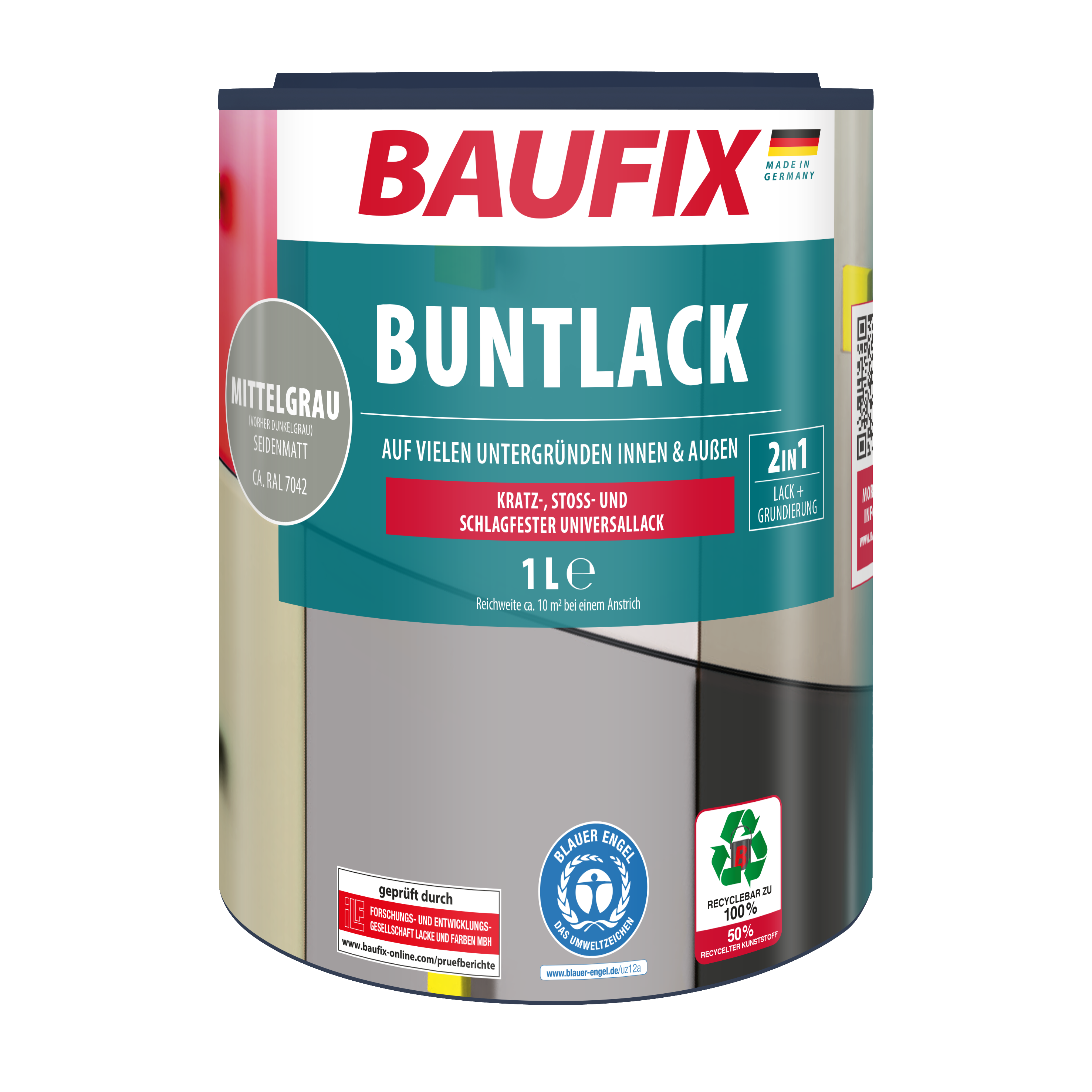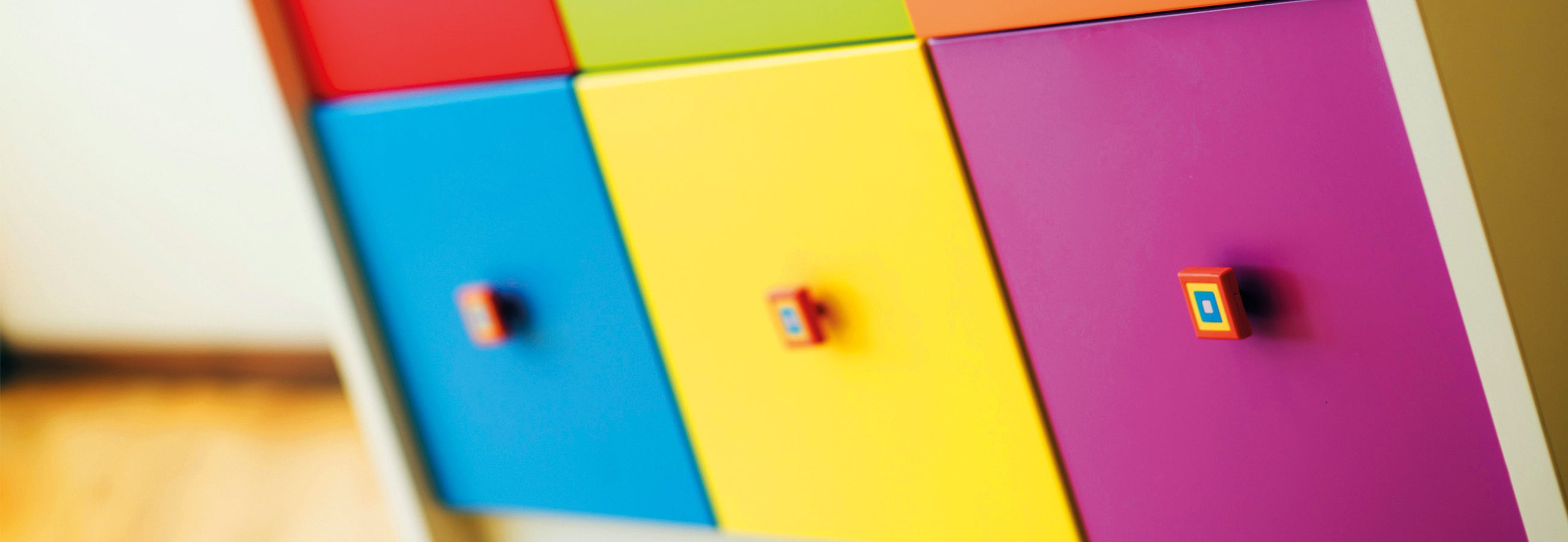Contents
subheading
Painting furniture – a fresh look for your home
Furniture is more than just a piece of furniture - it shapes the atmosphere of your living space and reflects your personal style. What do you do if a beloved piece of furniture looks old and worn or no longer fits into the interior design concept? A creative and inexpensive solution is to paint the furniture. Regardless of whether it is an heirloom or a find from a flea market - with a little paint, the right materials and a little patience, you can transform furniture into stylish, unique pieces in no time at all. In this guide, you will learn how to prepare your furniture professionally for painting, which colors and techniques are suitable for different surfaces and how to apply professional paint.
You will achieve results with a long lifespan. Let your creativity run wild and transform your furniture into real eye-catchers!
subheading
Painting furniture: What you need
sandpaper
Grit 120-180 for the first sanding, 220-320 for the intermediate sanding.
cleaning wipes
For removing dust and grease.
masking film and painter's tape
To protect the environment.
wood primer
For better adhesion and color result (depending on material).
colored paint or furniture paint
Acrylic, chalk or synthetic resin varnish, depending on the desired finish.
Paint brush
For edges and hard-to-reach places.
paint roller
For large, smooth surfaces.
sealing
Clear coat or wax for additional protection (optional).
stirring rod
For mixing the color.
paint tray
For clean work.
protective equipment
Gloves and a respirator mask when using strong-smelling paints and paint strippers containing solvents.
Painting furniture step by step – this is how it works!
Step 1:
Choose the right varnish or color depending on the desired look and use:
- Colored paint : For a robust and easy-care surface, in matt, satin or glossy, for spraying or painting
- Chalk paint : For a vintage or shabby chic style
- Color selection : If necessary, order color samples to select the right tone.
Step 2:
- Disassembly : Remove handles, hinges and other attachments.
- Sanding : Before painting the furniture, sand the entire surface with fine sandpaper (120-180 grit) to remove the varnish and eliminate any unevenness.
- Repair : Fill cracks and holes with wood filler and sand the areas smooth after drying.
Step 3:
- Cleaning : Remove dust, grease and dirt with a mild cleaner or special furniture cleaners.
- Rinse : Wipe with clean water and let the furniture dry thoroughly.
- Tip : Avoid using aggressive cleaners and solvents to avoid damaging the material.
Step 4:
- Light colors : Use a primer to prevent discoloration caused by the wood (e.g. oak or softwoods).
- Veneered furniture : A primer also protects against the so-called “bleeding” of real wood veneers.
- Drying : Allow the primer to dry for at least 8 hours or overnight.
Step 5:
- First coat : Apply the paint in clean brush strokes or with a roller for larger areas.
- Allow to dry : Allow the paint to dry for 4-6 hours.
- Second coat : Apply a second coat. A third coat may be necessary for perfect coverage.
- Tip : Intermediate sanding is not necessary, but if necessary it will ensure a particularly smooth surface.
Step 6:
- Silk matt varnishes : Usually no sealing is necessary after painting the furniture, as these are very robust.
- Matt varnishes and chalk paint : Seal with clear varnish or furniture wax for additional protection.
- Wax application : Apply the wax with a brush, let it dry for 24 hours and then polish it with a soft cloth.
subheading
Painting furniture with varnish or glaze – which color is the right one?
Use this text to share information about your brand with your customers. Describe a product, share announcements, or welcome customers to your store.
subheading
Lasur – Natural Beauty for Wood
A glaze emphasizes the natural character of the wood and protects it at the same time. It penetrates deep into the wood and leaves the grain visible. In addition to the visual enhancement, the glaze protects against moisture and UV rays. It is particularly suitable for wooden furniture both indoors and outdoors.
Varnish – opaque, robust and versatile
Wood varnish provides a smooth, opaque surface and protects against moisture, scratches and wear. It is ideal for heavily used furniture such as tables, chairs or kitchen fronts. Wood varnishes are available in various gloss levels and colors. There are weatherproof versions for outdoor furniture.
subheading
Painting, glazing or spraying furniture – here's how!
Use this text to share information about your brand with your customers. Describe a product, share announcements, or welcome customers to your store.
subheading
Painting furniture with varnish
Before the first coat, you should remove any dirt from the furniture, sand it and apply a primer. Then apply the desired varnish in several thin coats. Start with the edges and work with the wood grain. Allow each coat of varnish to dry well and sand lightly before applying the next coat to achieve high coverage and a flawless result.
Painting furniture with glaze
Varnish dressers etc. in long, even brush strokes in the direction of the wood grain. Thin-layer glazes penetrate deep into the wood, thick-layer glazes stay on the surface and seal it. Sand the first layer lightly and apply another to achieve optimal protection.
spraying furniture
Clean and sand the wood surface before painting. Cover any areas that are not to be painted and apply a primer. Spray the paint or glaze in even coats with slight overlap. Thin coats will prevent dripping. You can use clear varnish for more durability.
subheading
Painting furniture depending on the material
Use this text to share information about your brand with your customers. Describe a product, share announcements, or welcome customers to your store.
subheading
painting wooden furniture
Wood is a great surface for painting furniture. To remove old layers of wax or varnish, you should sand the wood surface thoroughly before applying the first coat. Soft wood requires a primer for an even result. Use water-based acrylic paint for a matte look or synthetic resin varnish for more shine and durability. To protect the wooden furniture, you can apply clear varnish or wax.
painting metal furniture
Metal furniture must be clean, rust-free and free of grease. Remove rust with a wire brush or sandpaper and then apply a special rust-protection primer. When painting the furniture, use metal protective paints or weatherproof spray paints for a long-lasting and corrosion-resistant finish. Several thin coats ensure an even surface.
Painting plastic furniture
Plastic is a smooth and often difficult surface to paint. Clean the furniture thoroughly with soapy water and degrease it with alcohol. Use a special plastic primer to improve the adhesion of the paint. Acrylic paints or spray paints suitable for plastic provide a durable finish. Thin layers of paint when painting furniture prevent dripping.
Painting coated and veneered furniture
Coated and veneered furniture has a smooth, non-absorbent surface. Roughen the surface slightly by sanding to better prepare it for painting. Use a special primer for difficult surfaces. Water-based varnishes or chalk paints are particularly suitable for coated and veneered furniture. You can use a hard-wearing clear varnish to provide additional protection after painting the furniture.
subheading
Painting furniture – a conclusion
Painting furniture is a creative and cost-effective way to breathe new life into old or unsuitable pieces of furniture. With the right preparation, the right colors and varnishes, and a little patience, you can achieve individual and long-lasting results. Whether you want to preserve the natural charm of wood, create a modern look, or achieve a vintage style - the diverse techniques and materials offer countless design options when painting furniture. With careful work and the right sealants, you will enjoy your refurbished pieces of furniture for a long time. Let your creativity run wild and transform old gems into modern, unique pieces!
FAQ: Frequently asked questions about painting furniture
No, the surface should be prepared before painting. This includes cleaning and degreasing the piece of furniture and sanding it. A suitable primer improves the adhesion of the paint, especially on smooth or painted surfaces such as plastic coatings.
If the surface is not sanded, the paint may not adhere well and bubbles, cracks or peeling may occur. Smooth, painted or coated furniture in particular requires sanding to create a rough surface for the paint.
Colored varnish is particularly suitable for heavily used furniture such as tables, chairs or kitchen furniture, as it is extremely robust and durable. It is available in different gloss levels such as matt, satin or glossy, so that the right look can be chosen for every style. Colored varnish is also durable, scratch-resistant and insensitive to moisture, which makes it ideal for everyday use.
Chalk paint is the perfect choice for a vintage or shabby chic look. It is easy to apply and offers high coverage. However, a coat of chalk paint is less durable and usually needs to be sealed with wax or clear varnish to protect the surface from scratches and stains.
The wood can absorb paint unevenly, making the end result spotty. Resins and tannins can also penetrate the paint and cause unsightly discoloration. A primer ensures an even layer of paint and extends the durability of the paint.
Mechanical : Use sandpaper, a sander or a putty knife for smaller areas and thick layers of paint.
Chemical : Use paint stripper to remove multiple layers of paint at once (note: protective equipment required).
Thermal : A heat gun dissolves the paint by heating it. As soon as the paint starts to bubble, you can peel it off with a spatula.

subheading
BAUFIX colored varnish, satin finish
- for indoor & outdoor
- quick-drying
- water-dilutable
- good adhesion properties
- suitable for wood, zinc, concrete, iron and masonry
- suitable for children's toys

